2 Engaging Retrieval Practice Activities to Start your Class on the Right Foot
Two ideas that can easily be adapted to your own context.
True to my habit of beginning the class with a retrieval practice activity, I have added to my growing arsenal two new ones: playing hangman and doing crosswords. This is how I have modified the rules of the games to adapt them to teaching/learning more effectively.
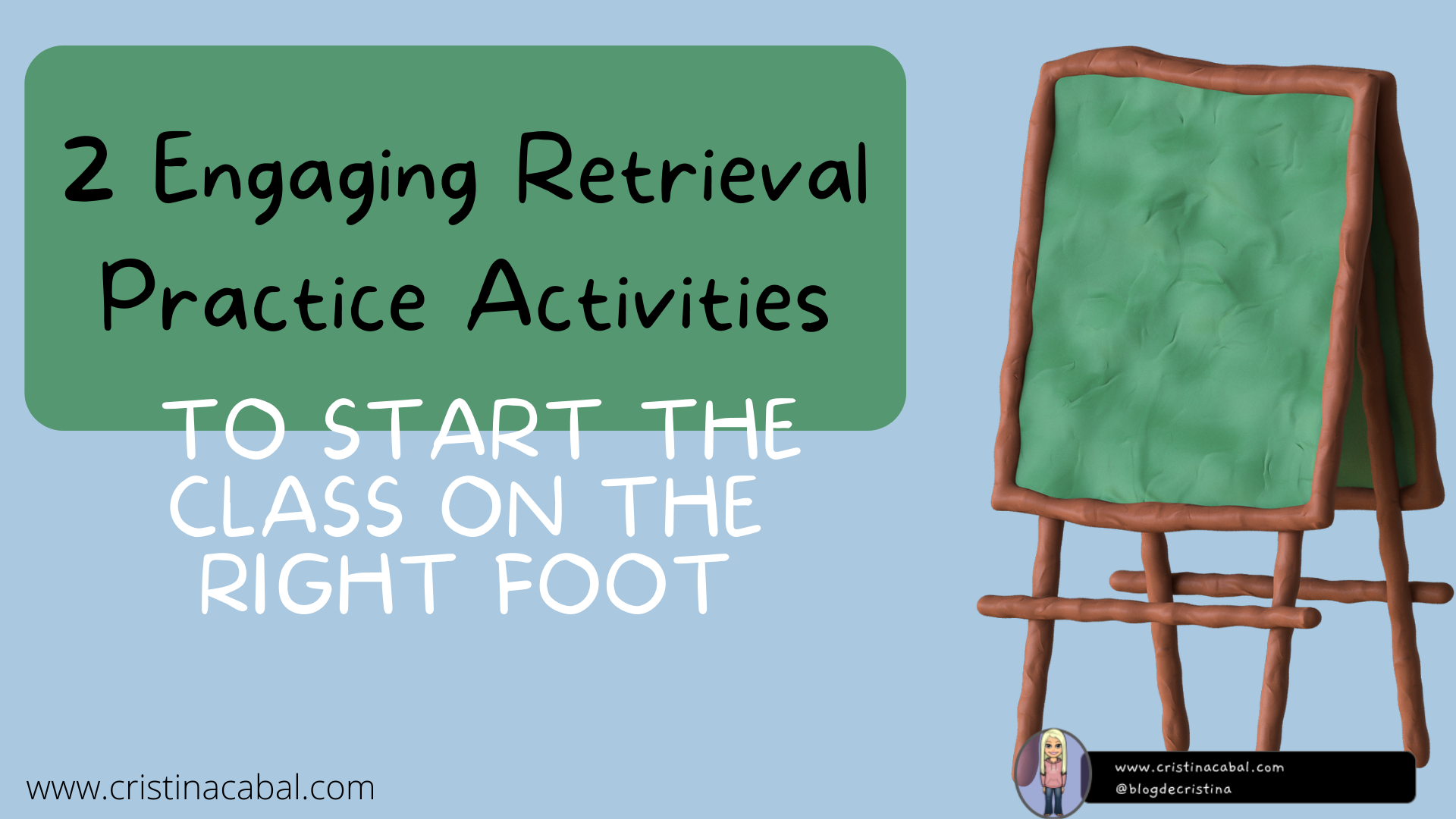
GUESSING THE TOPIC WITH A FRIENDLIER VERSION OF THE GAME HANGMAN
Playing hangman is an old classic. Well, at least for me. I cannot count the number of times me and my friends whiled away the time between classes (sometimes during classes) playing the paper and pencil version of hangman.
And playing hangman is just what I need to start my classes this week. (Aside note: did you know that the hardest word to guess in Hangman is Jazz?) This time, the word will be easier. Students will need to guess what topic we will cover in class next, But…. There are rules to follow:
- The class is divided into 2 teams. Each team names a spokesperson.
- Let’s say Team 1 starts. Now, to get the chance to say a letter to solve the puzzle, they’ll have to answer a content review question. For example: “what preposition collocates with the verb “depend”?”. After a quick discussion with the members of their group, the spokesperson will give an answer. If correct, they can suggest a letter. Whether it is a correct or incorrect guess, the turn will pass to Team B, who will get another content review question and the chance to guess a letter if the answer to the review question is correct.
- Important: Teams can’t try to solve the puzzle until half the letters have been guessed(i.e. if the word has 14 letters, 7 must have been guessed) and only the Team playing will have this chance.
- If they guess and fail, their turn will be skipped.
Tool used: Learning Apps
GAME: THE 15 SECONDS CROSSWORD GAME
Ready for another engaging gamified retrieval practice activity? Here we go!!
- Divide the class into 2 teams.
- Team A chooses a representative who chooses a number from the crossword puzzle, reads the description, and has 15 seconds to guess the answer with the help of their team.
- If they guess the answer, they can continue playing until
- they can’t guess the word,
- they run out of time (remember 15 seconds) or
- they guess three answers in a row.
If this happens, it is Team B’s turn.
- The winner is the team that solves the last clue.
In this case, the terms in the crossword were related to the “relationships”
NOTE: (click on the top right-hand corner to enlarge the crossword)
- Tool used: Learning Apps
I hope you have enjoyed these two activities I have created for my students.
Comparisons are Odious, Are they Not?
I am sure this super engaging activity about comparatives is just what you need this week. I am very pleased to have on the blog this week a guest post by colleague Ángeles Jimenez, from EOI Oviedo, who from time to time, saves my a** by sending me some of her creative activities. This is one of them. I hope you like it as much as I did.
Thanks, Ángeles, the floor is all yours!

“Comparisons are odious” says the old proverb, but the truth is that the more you practise, the faster your English will improve.
Every time there was a new grammar point to teach, my B2 students rolled up their eyes in desperation when I handed out another worksheet.
I began to look for new ways which would help me revise the comparative structures at a more advanced level, activating my students’ imagination at the same time. Although I had planned for it to be a brief and fast-paced revision, it turned out to be one of the most effective and engaging grammar lessons in a while – some students got very creative!
WHY PLAY IT.
Although this activity may not be quick, it will surely get your students thinking. It’s suitable for both creative and less creative students. They can come up with short or long explanations; they are also responsible for the content and the grammar, which means they will have to be attentive and spot their classmates’ mistakes.
WARM-UP
I started by asking my students to place their mobiles on their desks and posing some questions like:
- What do you mainly use it for?
- Does it make your life easier or more stressful?
- Is there anything you don’t like about it?
- When you need to get another phone, what type will you get?
Now, this question will automatically make students use a comparative structure:
“a better one”, “a more expensive one”, “a lighter one”…
Most of the times, they come up with basic adjectives, nothing to worry about at this stage.
I tell them I have a super expensive mobile phone I got as a Christmas present, adding that I’m in love with it because it’s innovative, powerful, and stylish.
And this is the moment I show them my state-of-the-art mobile phone, which looks something like this:
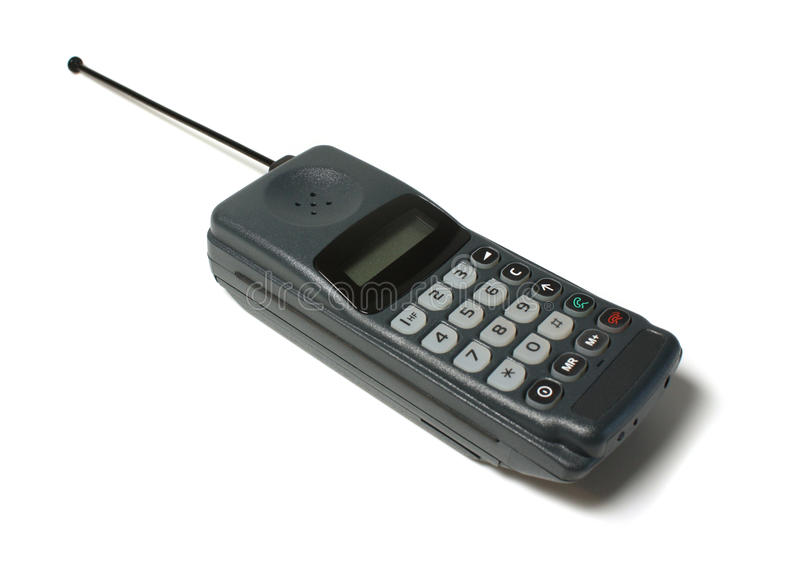
Hopefully, this will make them smile!
NEXT STEP
Involve your students by asking them questions. This will guide them into recognizing the pattern.
- Do you think your phone is more powerful and efficient than mine?
- Is it more stylish and better-looking? Does it have a better design?
- Is it more comfortable to hold?
- Does the battery last longer?
Inevitably, your students will end up comparing each other’s phones, and this will trigger the use of more adjectives.
To guide the activity in the direction you want it to go, ask them to think of more adjectives, positive and negative, that can be used to describe mobile phones. Write them on the board as they say them, or show them a list on the screen –it will probably include most of the ones they came up with.
Here are some examples:
AFFORDABLE, APPEALING, BAD, BASIC, CHEAP, CONVENTIONAL, DURABLE, EFFICIENT, EXPENSIVE, FAST, HEAVY, GOOD, INDISPENSABLE, INNOVATIVE, LARGE, LIGHT, MODERN
OBSOLETE, OLD-FASHIONED, OUTDATED, POPULAR, POWERFUL, RELIABLE, REVOLUTIONARY
SIMPLE, SLOW, SOPHISTICATED, STYLISH, SUITABLE, TIME-CONSUMING, TOUGH, UNRELIABLE
I usually try to arrange new vocab in alphabetical order. It’s an organized and easy-to-follow format when learning new vocab. And when I forget to include a word when making a list, I can always add it later on.
LET’S GO TO THE FUN PART!
- Decide on a category of objects with varied items. I chose technology because I wanted to kill two birds with one stone: students learn technology-related vocab or revise it if they have already dealt with it in class.
- Create a set of noun cards with common objects on them. These can be simply a noun or an image to represent the noun.
- Students sit in groups around a pile of cards placed face-down. The first student picks up the top card from the pile while the others wait and listen. The students should say why they need to change/buy the object on the card using a comparative structure.
EXAMPLE: I need a less basic, more efficient, and durable smartwatch. The one I’m using can’t keep track of my sleep, and it isn’t waterproof.
- If the student does it in a convincing and grammatically correct way, they keep the card. But if they make a grammar mistake when using the adjective or give an unconvincing reason, the card goes back to the pile. The game finishes when all the cards have been used.
PDF here
Comparisons are Odious de cristina.cabal
GOING THE EXTRA MILE.
I noticed that when they made mistakes like saying “MORE FASTER”, they were in fact trying to say“ A LOT FASTER”
Go back to some of the examples they used. They probably came up with something like: “I need to get an iPhone because it’s more efficient”. Ask them if it’s A LOT MORE or SLIGHTLY MORE efficient.
Show them a few examples of how to modify the sentence to say how different the object was.
To emphasize that a characteristic is either greater than the typical level, write these on the board:
- MUCH MORE / ER THAN
- FAR MORE / ER THAN
- WAY MORE / ER THAN
- A LOT MORE / ER THAN
To emphasize that a characteristic is either smaller than the typical level, write these on the board:
- A BIT MORE / ER THAN
- SLIGHTLY MORE / ER THAN
Before you carry on with this speaking part, ask them whether they think public transport is far more convenient than moving around by car. Hopefully, students will have different opinions as they have to take into account parking spaces, money spent on petrol, car maintenance…
Hand them out a sheet of paper with discussion prompts. These can be arranged as pair work/group work, so you can ask them to change pairs/groups when they finish and listen to more points of view.
This will help them gain confidence and their motivation increases since they correct their previous mistakes and learn new words.
To provide as much speaking as possible, ask them to produce at least 2 sentences using the ideas on the card + modifiers.
Here are some ideas:
- Phone / Face-to-face communication.
- Dancing / Doing yoga.
- Changing the driving age to 21 or not.
- Sharing a flat / Living with your parents
Click here to see more
Would Rather: Introducing, Revising and Reinforcing
This is not the first time I’ve shared a lesson on using Would Rather to express a preference, but this lesson is also an excuse to share some of the tricks (also called activities 😊) I keep up my sleeve to engage my students and make them enjoy learning; because they/ we deserve to have fancy, engaging, dynamic lessons even if what needs to be explained is as dull as ditch water.
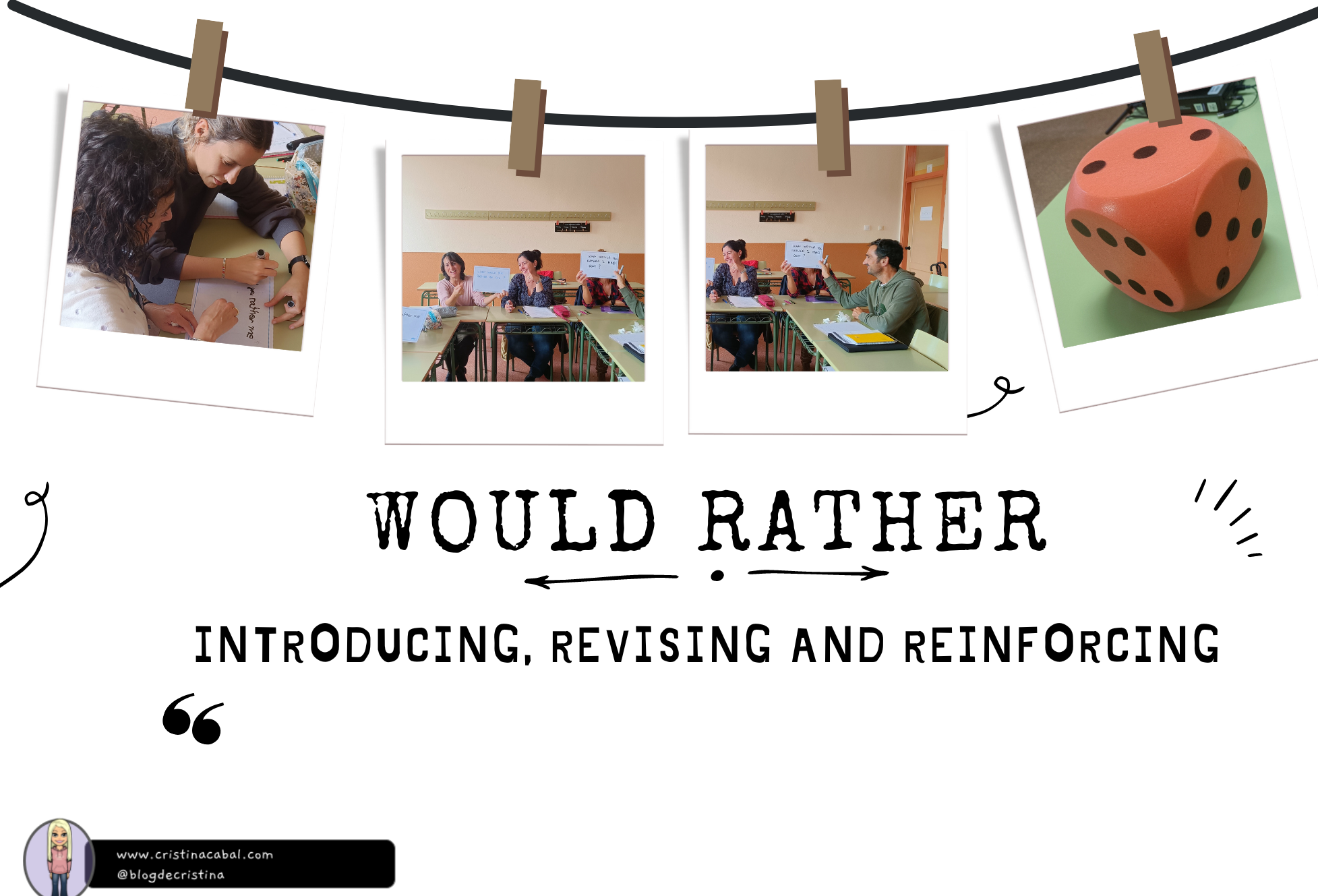
I strongly support the use of visuals in the class to create stimulating lessons. I know creating your own content takes time. But it pays off. Trust me on this one!
FIRST SESSION
INTRODUCING THE TARGET LANGUAGE. PRESENTATION.
I have introduced Would Rather presenting students with some slides and some visual prompts and asking them to provide the questions based on the images.
Some help might be needed, at least, for the first two slides. Encourage students to describe their preferences in pairs, even if it’s a guided assignment.
Target grammar:
- Question: Would you rather read a book or watch TV?
- Answer: I’d rather read a book than watch TV because…
Would Rather Introduction de cristina.cabal
GRAMMAR AND EXERCISES
SECOND SESSION
The two activities that follow are meant to be done the following day in order to revise and reinforce this content.
REVISING AND REINFORCING: VIDEO, INTERACTIVE GRAMMAR, FLIP CARDS GAME
(NOTE FOR TECH ENTHUSIASTS) This beautiful activity has been created with @Genial.ly. First I created the video, published it on YouTube, and then embedded it on Genial.ly. Then, I used the Template to create the Flipcards.
- Revise with the video (1st slide)
- Revise with the matching grammar (2nd slides)
- Flip Cards Game (following slides). To be used in the game that follows.
FLIPCARDS GAME. Rewriting with Would Rather. Using Dry-Erase Boards
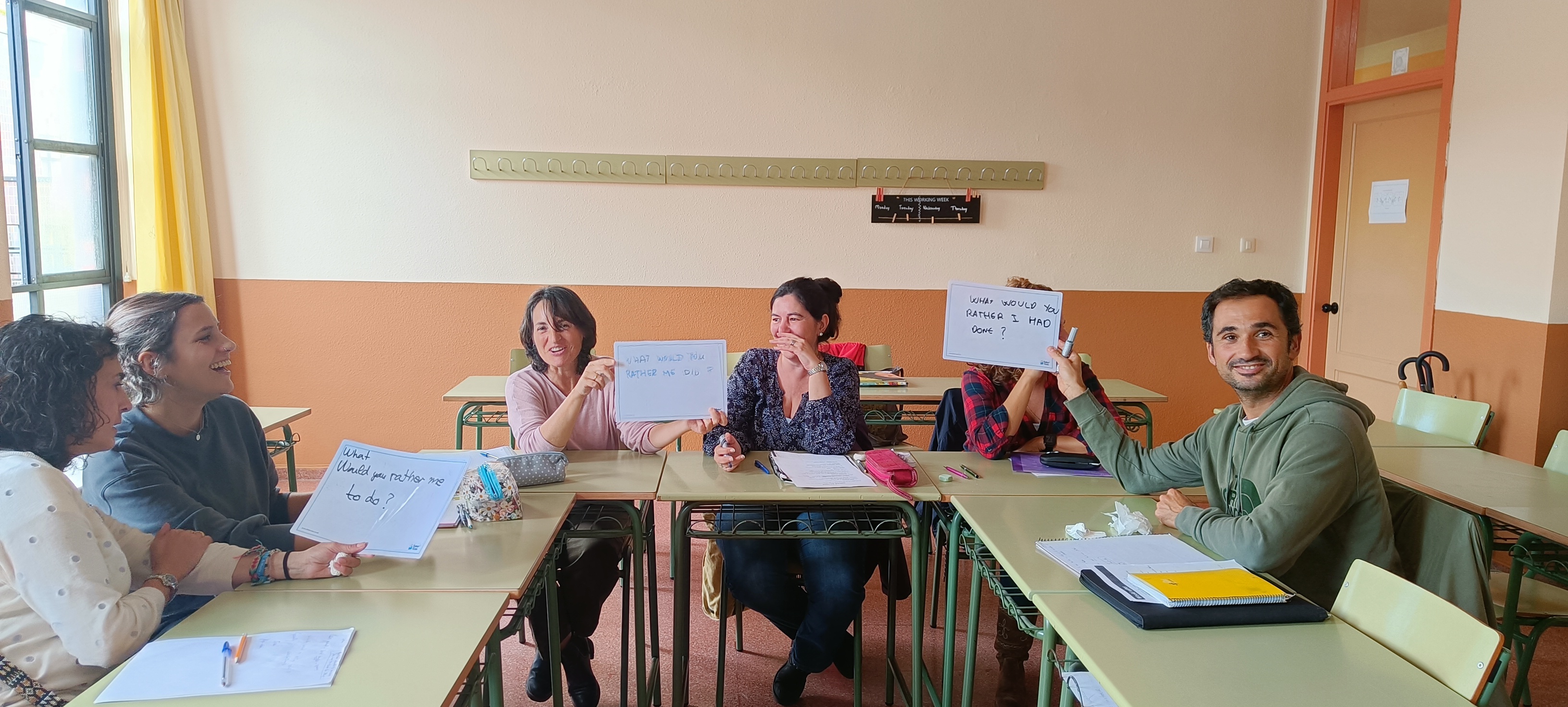
1. Pair learners and give each pair a dry-erase board and a whiteboard marker.
2. Show the first sentence and ask students to rewrite it using Would Rather
3. Depending on the length or difficulty of the sentence, set a different time limit.
4. Once the pair have their sentence, ask them to write it on the board, big enough for you to see from a distance.
5. When the time is up, ask the pairs to hold it up and quickly go through all the sentences, awarding 1 point to the pair who has the correct grammar.
6. The winner is the pair that get the most points.
Note: Be strict with spelling mistakes or any other tiny mistakes. Students love it when you are strict and don’t give away points easily.
Follow-up: Revise all the sentences again, but this time orally.
SPEAKING: BOARD GAME
This board game has all the ingredients of a good game:
- Reinforces grammar
- Boosts communicative skills
- Improves writing skills
- Builds rapport
- + Combines technology with traditional props: in this case, a huge die (there is a built-in die on the board, so don’t worry if you don’t have this beautiful red die; it is just that I love mixing both worlds.
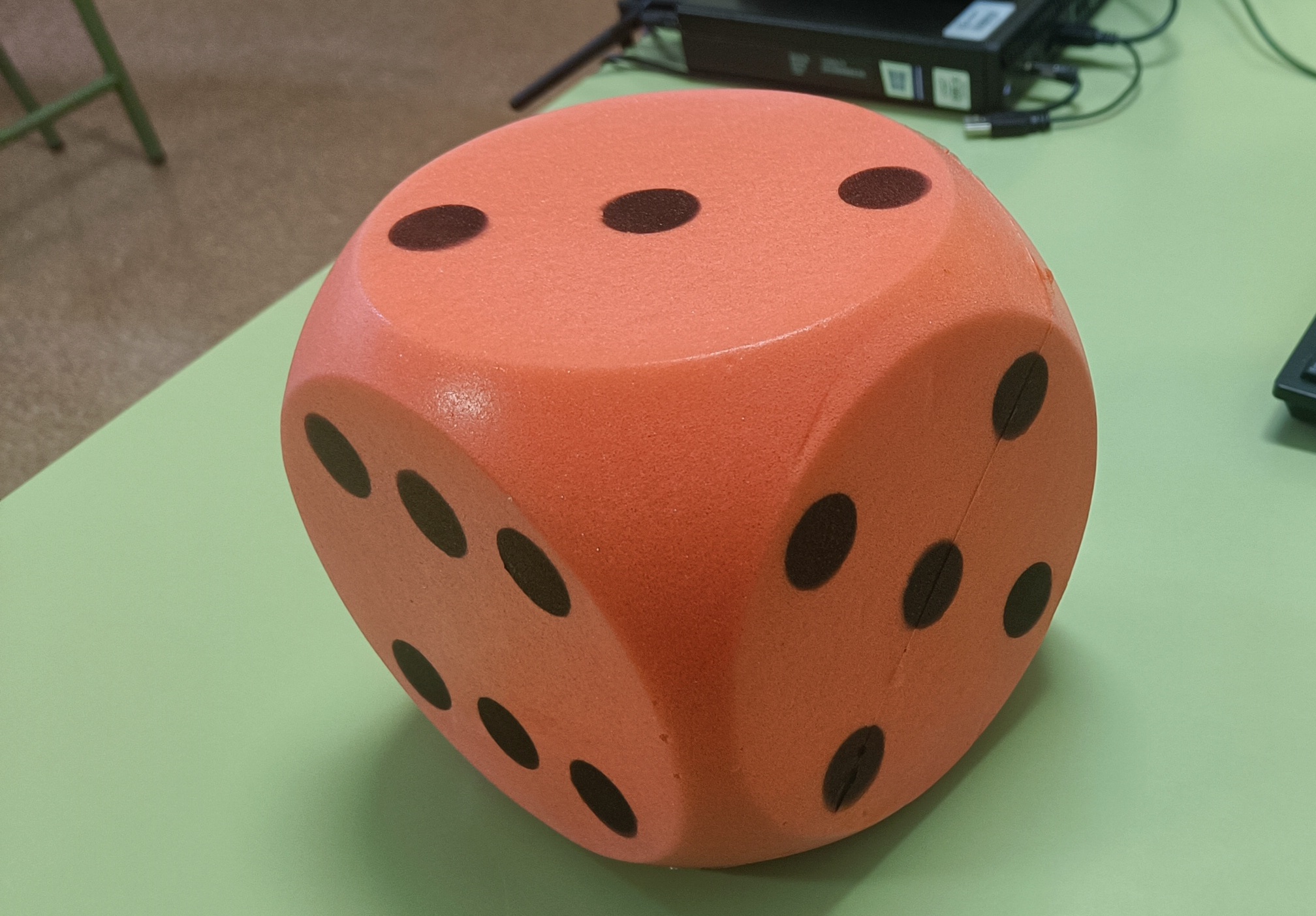
And here’s the board. As you can see,
- There are 3 draggable counters.
- To see the prompts, you need to click on the number.
- As you can read in the Instructions, if they land on a square with the question GIF, students will need to write a “would you rather” question for the teacher. Yes, you need to answer, it is only fair!!!
Hope you have enjoyed this lesson plan. My students have! 🙂
Aspirated /P,K,T/ and Some Fun Activities to Practise
“The fortis plosives /p,t,k/, when initial in an accented syllable, are usually accompanied by aspiration” A.C Gimson.
Before you continue reading, you should know I am not a native speaker, so I don’t tend to write many posts on pronunciation. However, some sounds require special attention, and it is my job as a teacher to show my students how to correctly pronounce these sounds. Besides, students love pronunciation activities.
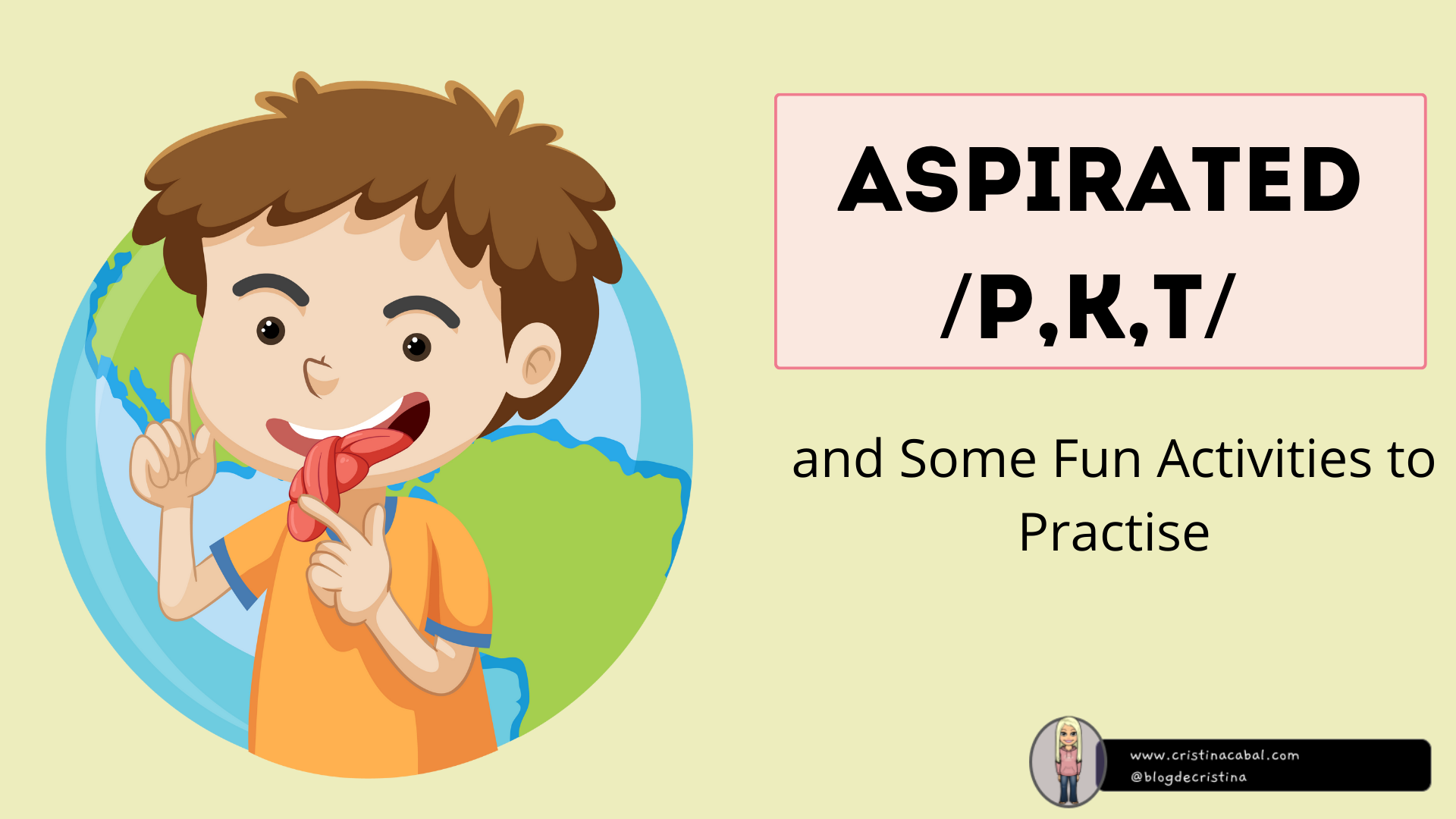
The three sounds we are going to tackle today are easy to pronounce for Romance and Slav speakers and because the sounds seem similar to the sounds in their own native language, these speakers might tend to pronounce these sounds without aspiration.Without aspiration,” there is the danger that the English listener may understand, for example, “bin” instead of “pin” since he interprets lack of aspiration as the lenis /b/”-A.G Gimson
EXERCISE 1: HAVE FUN ( Spanish speakers)
- Write these three Spanish words on the board (tetera, papá, cacao) and ask students to read them in Spanish.
- Now, ask them to imagine how these 3 Spanish words would be pronounced by an English native speaker. Most probably, and with some laughs, it will sound something such as this.
- Give them 1 minute to practise, in pairs.
- Ask: what’s the difference? Explain that aspiration happens when these three sounds are in initial accented position. Emphasize the importance, for communicative purposes, of this aspiration.
EXERCISE 2: THE THEORY. Necessary.
Illustrative video, created by Tools for Clear Speech, which I highly recommend.
- To pronounce /t/: place the tip of your tongue behind your upper teeth. To produce aspiration, push air out of your mouth.
- To pronounce /p/: close your lips and release them, pushing air out of your mouth.
- To pronounce /k/: raise the back of your tongue towards your soft palate. Lung air is compressed behind this closure and then released with force.
/p/ as in “paper” de cristina.cabal
EXERCISE 3: MORE FUN ( and why not )
- Ask students to give you words beginning with /p,t,k/ in initial accented position. Write them on the board

- Take a Kleenex (paper tissue) or a piece of toilet paper. Choose one of the words on the board, for example, “paper”. Hold the piece of paper in front of your mouth and demonstrate the difference between pronouncing non-aspirated /p/ in “paper” and aspirated /p/ “paper”. You might need to rest after exemplifying 🙂
- Allow them some time to practise using the words on the board. Emphasize that the piece of paper must move.
EXERCISE 4: TONGUE TWISTERS
What could be more English than a classic tongue twister?

On the board, write these three below and let them practise in pairs. I was going to say “more fun” but I am going to refrain; I need to become a more serious teacher.
- With /p/, the super popular “Peter Piper”
Peter Piper picked a peck of pickled peppers. A peck of pickled peppers Peter Piper picked.
If you don’t feel up to it, here you can listen to a perfect pronunciation of the tongue twister.
- With /t/, the long… “Betty Botter”
Betty Botter bought some butter. But she said the butter’s bitter, “If I put it in my batter. It will make my batter bitter, But a bit of better butter.- that would make my batter better.
- With /k/ the super difficult …
A cupcake cook in a cupcake cook’s cap cooks cupcakes
And again, If you don’t feel up to it, here you can listen to a perfect pronunciation of the tongue twister.
EXERCISE 5: STUDENTS’ OWN TONGUE TWISTERS
This is going to be fun.
- Put students in pairs and assign them a sound /p/, /t/ or /k/.
- Ask them to imake up a tongue twister with their assigned sound. The tongue twister should have no less than 6 words, and there should be at least 4 words containing the aspirated sound.
- They should write their tongue twisters on a slip of paper. Well, on two slips of paper as every student should have their own slip of paper with his/her own tongue twister in it. Encourage clear handwriting and let them practise before the next step.
- Ask students to stand up and pair up with another student in the class. Exchange slips of paper. Read your classmate’s tongue twister. Before moving to find another partner, exchange slips of paper again so that you take your own tongue twister with you.
- Hope you have enjoyed these activities. I have!!!
